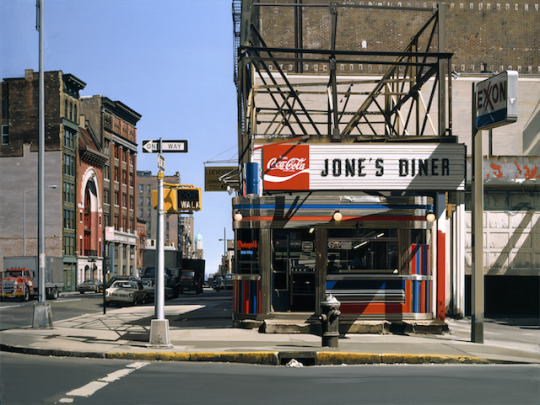Giorgio Vasari, introducing his Lives of the Painters, Sculptors, and Architects, wrote that "the ravening maw of time…has…blotted out and destroyed the names of all those who have been kept alive by any other means than by the…pens of writers."
Let us hope he was wrong. If the reputation of any of today’s artists is to survive, it will be in spite of many of those who write about art, and especially of those who write the blurbs accompanying art objects in museums. Take as an example the current exhibition at the Smithsonian’s American Art Museum on one of the founders of Photorealism, Richard Estes.
Estes’ work is remarkable, and the exhibit, set up in the same space as 2012-2013’s superlative The Civil War and American Art—one of Washington’s best exhibits in years—is completely worth a visit. Unfortunately, contemplating the paintings means having to ignore blurbs like this:
Estes’ recent landscapes of Acadia National Park on Mount Desert Island resemble uncharted tangles of forest in which light filters through trees. These images of Maine, and paintings of Alaska and Antarctica, do not address, except by very subtle inferences, the intrusion of tourism on the land, threats of commercial development or exploitation, or the transformation of the natural environment by climate change. Instead, they extend the nineteenth century tradition of the romantic, untouched landscape.
For starters, why "resemble"? The works in questions are paintings—by a photorealist, no less—of "uncharted tangles of forest in which light filters through trees." The paintings "resemble" their subjects insofar as every realistic painting resembles that of which it is a painting. The Mona Lisa "resembles" a Florentine donna sitting for her portrait. The awkward use of this verb "resembles" the writing style of a college freshman—but this is the Smithsonian.
Issues of style aside, what follows is arguably worse. Estes’ paintings, both of Maine and in general, seem to me to be free of political or religious or ideological messages of any kind. They are some of the purest investigations of images-as-images that one is likely to see in a gallery today. Why the sermonizing about tourism and climate change? It reads like a conventionally pious complaint that Estes should be interested in these things, but isn’t. The suggestion that there might be "very subtle inferences" of these issues is belied by the paintings themselves.
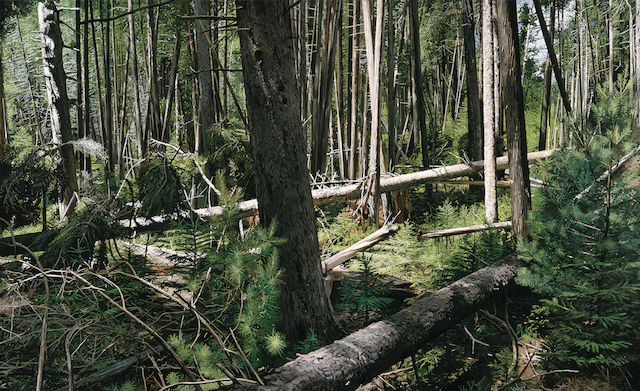
Pretty subtle. Is global warming to blame for the tree falling over?
While there are valuable insights to be found in blurbs here and there—Estes’ work does indeed look back to the nineteenth century—there is too much pretentious diction (Estes doesn’t paint landscapes, but rather has an "engagement with the land") and otherwise reasonable observations gussied up in language meant to make the writer sound smart and the reader feel unqualified ("Here, Estes set up potent dualities of man-made geometric and natural organic forms…").
Tough love, Smithsonian American Art Museum. Otherwise you have mounted a lovely and thought-provoking show of an important artist who should be even more widely known than he is. Estes—like all of the Photorealists and, in a sense, all recent painters—has had to cope with a world in which we are overwhelmed by too many images, a visual cacophony, and in which newer forms of image-making, like photography, seem to make useless or hopelessly twee an art like painting. Estes has had to cope with the question: What is painting for?
Among the elements of Estes’ answer is one of the same things that drove the founders of modern painting (all driven by a "burning desire for glory," according to Vasari): the idea that painting should be a monument to human craftsmanship itself. To look at an Estes canvas is to marvel at the just how far the limits of human ability can be pushed.
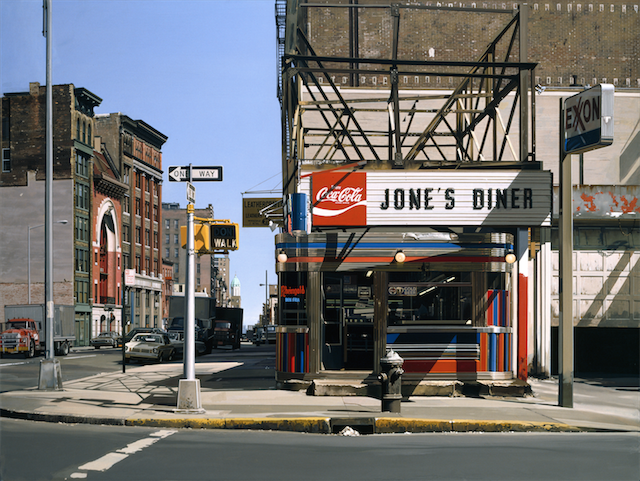
In this respect, Estes' work evokes the same response that the earliest cave painters must have commanded when they created objects for play or devotion, though Estes has a few more tricks up his sleeve than they did. Working in a studio from photographs that he took of his subjects, Estes’ landscapes—and they are mostly landscapes, though the urban scenes are so precise as to be classifiable as architectural studies—give you the sense of someone who is at once charming, a show off, and possessed of a good sense of humor. He likes tricks, especially tricks based in photography and the nature of reflections.
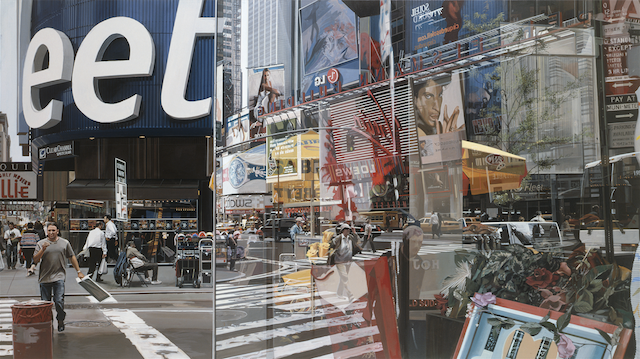
The long lines of sight available in the Smithsonian’s space are well suited to the show, as Estes’ paintings are best seen both from afar and up close. The enormous Brooklyn Bridge, in particular, commands attention when seen at a distance along the long axis of the exhibition space—but when you stand one foot from the canvas it becomes clear that the angle of the perspective changes as you move your head: looking down, one sees through the bottom of the bridge; turn one’s head left, and see the financial district; right, and see Midtown.
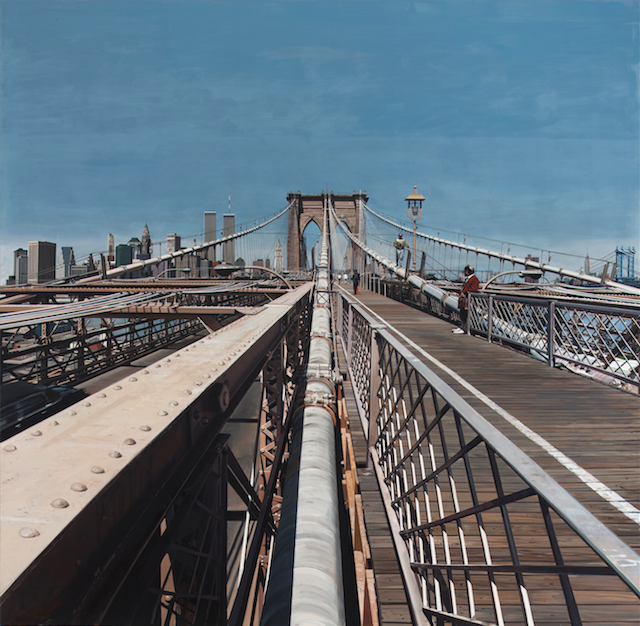
The pure fun of illusion goes back to the origins of representative art. For all of his very postmodern sense of play, Estes is among the more traditional artists to achieve a wide following among critics. Having thoroughly maligned the exhibit’s notes, let me now say that they and the exhibit’s accompanying volume provide insight into Estes’ debt to Frederic Edwin Church, to the Impressionists in general, to the precise architectural renderings of Canaletto, and beyond. Even one of his most forthrightly contemporary images, Water Taxi, contains the Impressionist motif of well-off mothers and daughters.
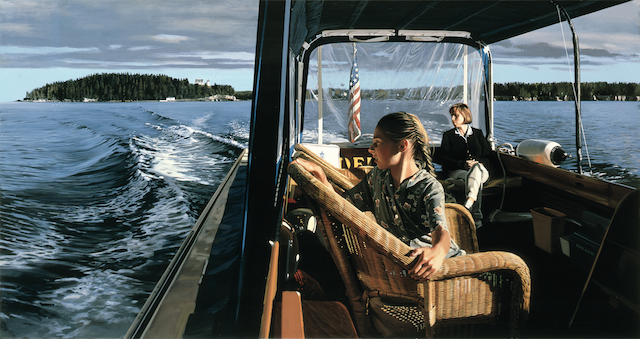
For their frequent noisiness, Estes paintings encourage the viewer to slow down and immerse oneself in the details of how humans see things, of how the world actually looks to us. Ignore the blurbs. Let Estes’ paintings speak to you, quietly, of visual cacophony.
